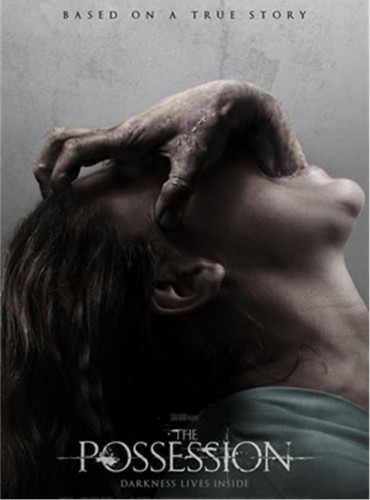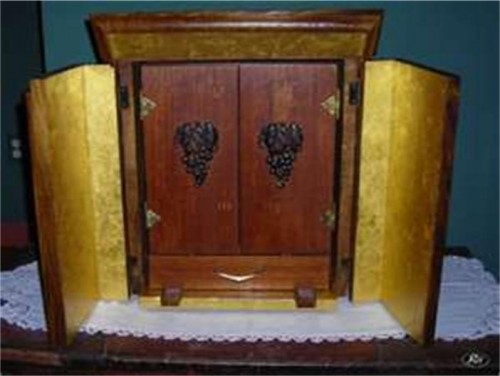
I saw a trailer last night regarding a new offering from Lions Gate. ‘The Possession’ is about a young girl who finds a small wooden box. Soon it is apparent that there’s some sort of demonic activity associated with the little Dybbuk box. Naturally it attaches itself to the little girl and off we go!
Now, this is not my kind of thing. As you all know, I’m more of a crypto, UFO, conspiracy guy. However, something grabbed my attention. No, it wasn’t the trailer itself; it was that all too familiar phrase we have been seeing for the past few years: “Based on true events” or “based on actual events” or “based on a true story”, etc… No matter how you slice it, these interchangeable phrases all evoke the same thought process.
In fact, some of you may remember the heated discussions surrounding various other “based on true event” films. We really went round and round, especially when “The 4th Kind” made such a declaration.
Lets take a look at the trailer for ‘The Possession’ and then we’ll investigate the “based on” claims.
Pretty freaky, huh? But is it in fact based on truth? Lets see:
Apparently back in 2004 a small wooden box went up for auction on Ebay. The seller, a Missouri college student Iosif Nietzke described it as a “haunted Jewish wine cabinet box”. Iosif went on to list the contents of the box as follows: Two locks of hair, one granite slab, one dried rosebud, one goblet, two wheat pennies, one candlestick and one “dibbuk”. Wait, what was that last thing you say? It’s called a dibbuk, which is alleged to be a spirit from Yiddish folklore.
To quote what seems to be the most knowlegable source, The Los Angeles Times, here’s the detailed run down:
A small wooden cabinet went up for auction on EBay. Inside were two locks of hair, one granite slab, one dried rosebud, one goblet, two wheat pennies, one candlestick and, allegedly, one “dibbuk,” a kind of spirit popular in Yiddish folklore.
The seller, a Missouri college student named Iosif Nietzke, described the container as a “haunted Jewish wine cabinet box” that had plagued several owners with rotten luck and a spate of bizarre paranormal stunts.
“We have definitely seen a tidal wave of ‘bad luck,’ ” the seller wrote on EBay in the first week of February. “Most disturbingly, last Tuesday, my hair began to fall out. I’m in my early 20s and I just got a clean blood test back from the doctor’s….”
Within days, the box’s opening bid of $1 jumped to $50; that value soon quadrupled. On Feb. 9, the box sold for $280 to a university museum curator named Jason Haxton.
In the months after, the hype surrounding the wooden box has mushroomed. The Forward, a 107-year-old Jewish newspaper on the East Coast, ran a story about the box’s sale and supposed otherworldly powers. Since then, the EBay auction page has logged more than 140,000 hits.
At least five authors, one screenwriter and a documentary crew have sought up-close access, says Haxton, a 46-year-old father of two who also lives in Missouri. Rabbis, Orthodox Jews and Hebrew intellectuals have contacted Haxton, offering to crack the box’s mysteries.
The legend of the dybbuk or dibbuk box as Haxston calls it has gotten so out of control that Haxston had to put up a website called dibbukbox.com to handle the overwhelming interest.
Here’s an excerpt from that site regarding the box:
The first buyer an antique buyer-refinisher
All of the events that I am about to set forth in this listing are accurate and may be verified by the winning bidder with the copies of hospital records and sworn affidavits that I am including as part of the sale of the cabinet.
During September of 2001, I attended an estate sale in Portland Oregon. The items liquidated at this sale were from the estate of a woman who had passed away at the age of 103. A grand-daughter of the woman told me that her grandmother had been born in Poland where she grew up, married, raised a family, and lived until she was sent to a Nazi concentration camp during World War II. She was the only member of her family who survived the camp. Her parents, brothers, a sister, husband, and two sons and a daughter were all killed. She survived the camp by escaping with some other prisoners and somehow making her way to Spain where she lived until the end of the war. I was told that she acquired the small wine cabinet listed here in Spain and it was one of only three items that she brought with her when she immigrated to the United States. The other two items were a steamer trunk, and a sewing box.
I purchased the wine cabinet, along with the sewing box and some other furniture at the estate sale. After the sale, I was approached by the woman’s granddaughter who said, I see you got the dibbuk box. She was referring to the wine cabinet. I asked her what a dibbuk box was, and she told me that when she was growing up, her grandmother always kept the wine cabinet in her sewing room. It was always shut, and set in a place that was out of reach. The grandmother always called it the dibbuk box. When the girl asked her grandmother what was inside, her grandmother spit three times through her fingers said, a dibbuk, and keselim. The grandmother went on to tell the girl that the wine cabinet was never, ever, to be opened.
The granddaughter told me that her grandmother had asked that the box be buried with her. However, as such a request was contrary to the rules of an orthodox Jewish burial, the grandmothers request had not been honored. I asked the granddaughter what a dibbuk, and keselim were, but she did not know. I asked if she would like to open it with me. She did not want to open it, as her grandmother had been very emphatic and serious when she instructed her not to do so, and, regardless of the reason, she wanted to honor her grandmother’s request.
I finally ended up offering to let her keep what seemed to me to be a sentimental keepsake. At that point, she was very insistent and said, No, no you bought it!
I explained that I didn’t want my money back, and that it would make me feel better to do what I thought was an act of kindness. She then became somewhat upset. Looking back now, the way she became upset was just plain odd. She raised her voice to me and said, you bought it! You made a deal!
When I tried to speak, she yelled, we don’t want it! She began to cry, asked me to leave, and quickly walked away. I wrote the whole episode off to the stress and grief she must have been experiencing. I took my purchases and politely left.
So, is this enough to convince us that the subject of the movie is truly based on reality? Movie goers are so often led down the primrose path and most often the “true events” that lead them into the theater are just threads and nuances of truth. These producers know that most will just accept it at face value and by the time word really gets out, the money’s already been made. In fact, so convinced are some that even in the face of hard fact they continue to believe.
And what of this strange Jewish box? Actually, that’s a more interesting story on its own. This is certainly some weird, wild stuff. Did such boxes really exist? How many of them are actually out there? Pandora would be hard pressed to match the excitement provided by the subject film.
At the very least, I definitely recommend checking out the dibbuk box website.
Don’t forget to review the associated articles below which deal with our BOTE saga.
I’d like to thank The Los Angeles Times as well as dibbukbox.com.
Associated Content
GT: So You Think “Paranormal Activity” Is Real?
GT: The Fourth Kind: Exploited Tragedy
GT: More dirt on the “The haunting in Connecticut” case






